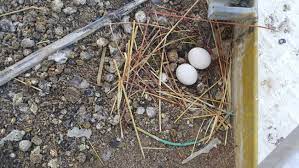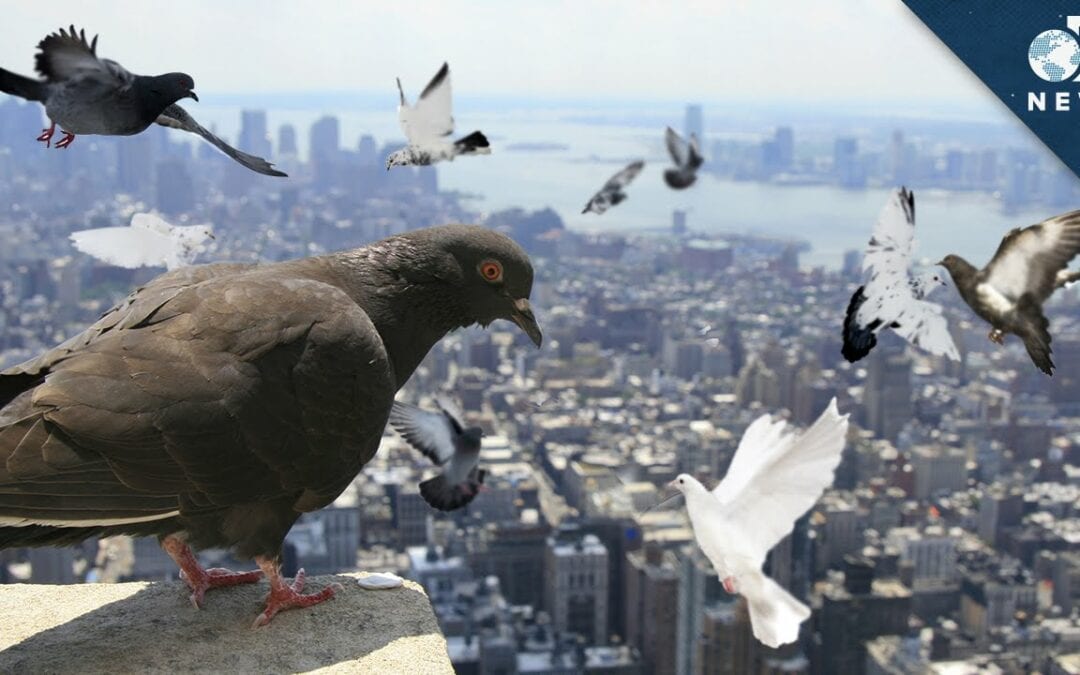
by Pigeon Patrol | Jun 21, 2021 | Pigeon Spikes, Pigeons, Pigeons in the News, Raccoons, Sparrows, UltraSonic Bird Control
Photographs, especially of humans, are widely used as stimuli in behavioural research with pigeons. Despite their abundant use, it is not clear to what extent pigeons perceive photographs as representing three-dimensional objects. To address this question, we trained 16 pigeons to identify individual, real-life humans. This discrimination depended primarily on visual cues from the heads of the persons. Subsequently, the pigeons were shown photographs of these individuals to test for transfer to a two-dimensional representation. Successful identification of a three-dimensional person did not facilitate learning of the corresponding photographs. These results demonstrate limitations of cross-recognition of complex objects and their photographs in pigeons.

Source
Pigeon Patrol Products & Services is the leading manufacturer and distributor of bird deterrent (control) products in Canada. Pigeon Patrol products have solved pest bird problems in industrial, commercial, and residential settings since 2000, by using safe and humane bird deterrents with only bird and animal friendly solutions. At Pigeon Patrol, we manufacture and offer a variety of bird deterrents, ranging from Ultra-flex Bird Spikes with UV protection, Bird Netting, 4-S Bird Gel and the best Ultrasonic and audible sound devices on the market today.
Voted Best Canadian wholesaler for Bird Deterrent products ten years in a row.
Contact us at 1- 877– 4– NO-BIRD, (604) 585-9279 or visit our website at www.pigeonpatrol.ca
Pigeon/Pigeon Patrol / Pigeons Roosting / Vancouver Pigeon Control /Bird Spikes / Bird Control / Bird Deterrent / Pigeon Deterrent? Surrey Pigeon Control / Pest /Seagull deterrent / Vancouver Pigeon Blog / Birds Inside Home / Pigeons in the cities / Ice Pigeons/ What to do about pigeons/ sparrows , Damage by Sparrows, How To Keep Raccoons Away, Why Are Raccoons Considered Pests/ De-fence / Pigeon Nesting/ Bird Droppings / Pigeon Dropping/ woodpecker control/ Professional Bird Control Company/ Keep The Birds Away/ Birds/rats/ seagull/pigeon/woodpecker/ dove/sparrow/pidgeon control/pidgeon problem/ pidgeon control/flying rats/ pigeon Problems/ bird netting/bird gel/bird spray/bird nails/ bird guard

by Pigeon Patrol | Jun 7, 2021 | Pigeon Patrol's Services, Pigeon Predators, Pigeon Spikes, Raccoons, Sparrows, UltraSonic Bird Control
Belgium is regarded as the home of pigeon racing, with approximately 60,000 pigeon fanciers in a population of 10 million.

In a standard race, as many as 5,000 tagged pigeons are transported to a single location and released.
When the pigeon arrives home his owner removes the tag and gets it time-stamped by a sealed timing device, designed so that it cannot be tampered with.
Homing pigeons have a long and distinguished history. In 1815, a pigeon belonging to the financier Nathan Rothschild carried the news of Napoleon’s defeat at Waterloo to London.
A homing pigeon belonging to the US Army Signal Corps in 1918 was awarded the French Croix de Guerre. The bird, named Cher Ami, is currently mounted in the Smithsonian’s Price of Freedom exhibit in the US.
According to Tucker Daniel, and his fellow enthusiast Kevin Barry, some pigeon fanciers of note include footballer Duncan Ferguson, actor Paul Newman and boxer Mike Tyson. (Iron Mike? Really?) For more information see www.racingpigeon.ie or www.isrf.ie
Source
Pigeon Patrol Products & Services is the leading manufacturer and distributor of bird deterrent (control) products in Canada. Pigeon Patrol products have solved pest bird problems in industrial, commercial, and residential settings since 2000, by using safe and humane bird deterrents with only bird and animal friendly solutions. At Pigeon Patrol, we manufacture and offer a variety of bird deterrents, ranging from Ultra-flex Bird Spikes with UV protection, Bird Netting, 4-S Bird Gel and the best Ultrasonic and audible sound devices on the market today.
Voted Best Canadian wholesaler for Bird Deterrent products ten years in a row.
Contact us at 1- 877– 4– NO-BIRD, (604) 585-9279 or visit our website at www.pigeonpatrol.ca
Pigeon/Pigeon Patrol / Pigeons Roosting / Vancouver Pigeon Control /Bird Spikes / Bird Control / Bird Deterrent / Pigeon Deterrent? Surrey Pigeon Control / Pest /Seagull deterrent / Vancouver Pigeon Blog / Birds Inside Home / Pigeons in the cities / Ice Pigeons/ What to do about pigeons/ sparrows , Damage by Sparrows, How To Keep Raccoons Away, Why Are Raccoons Considered Pests/ De-fence / Pigeon Nesting/ Bird Droppings / Pigeon Dropping/ woodpecker control/ Professional Bird Control Company/ Keep The Birds Away/ Birds/rats/ seagull/pigeon/woodpecker/ dove/sparrow/pidgeon control/pidgeon problem/ pidgeon control/flying rats/ pigeon Problems/ bird netting/bird gel/bird spray/bird nails/ bird guard
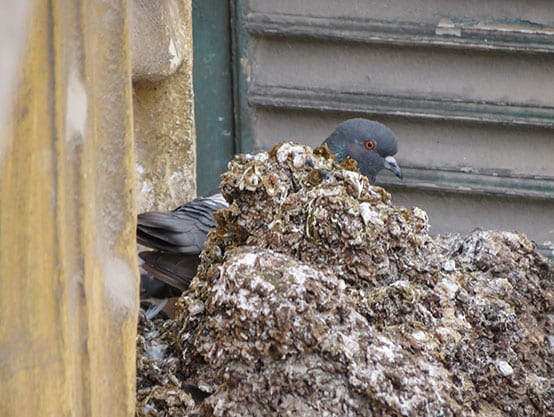
by Pigeon Patrol | May 31, 2021 | 4-S Gel Bird repellent, Animal Deterrent Products, Bird Deterrent Products, Bird Law, Pigeons, Raccoons, Sparrows, UltraSonic Bird Control
There’s been a few charges laid around town but there is one individual who is causing more headaches than normal
The pigeon problem in Kirkland Lake is so bad, police felt the need to issue a news release this morning warning residents to follow the law when dealing with them.
The town started renting out traps to residents today to capture pigeons, and police say that trappers will be responsible for the disposal of the birds, which includes a ban on throwing them in the garbage for curbside pickup. Successful trappers will instead have to take the pigeons for burial at the town dump.
“The OPP want to inform the residents that it is each individual’s responsibility to educate themselves on this topic and to ensure that they are acting within the laws, regulations and town by-laws,” says Constable Adam Gauthier.
The problem started, says Ashley Bilodeau, Kirkland Lake’s Manager of Planning and Land Development, when a few bird lovers started feeding the pigeons.
“We have a couple of residents that have been obnoxiously feeding pigeons to the point where we have some serious problem areas, so we passed a no-feeding bylaw back in the fall,” she told BayToday. “However, there is one individual who just continues to feed them despite the bylaw and has been charged. There’s been a few charges laid around town but there is one individual who is causing more headaches than normal.”
The fine for feeding is steep at $100, and that’s down from the $250 the town wanted to charge but the province wouldn’t allow it.
“So we’re trying to find different ways to combat the issue because it’s now causing problems to people’s properties and vehicles because there are so many of them.”
Bilodeau says the town has checked with the MNRF and it’s not illegal to kill pigeons although you are required to have a small game licence in order to trap and kill pigeons.
The town has not placed a limit on the number of pigeons people can capture, but police warn folks can’t use their guns to shoot the birds because discharging a firearm is prohibited within the Town of Kirkland Lake,
Bilodeau says poop is the problem.
“They’re also causing damage to buildings by trying to build nesting areas,” she adds. “We’ve got four traps here and people can come in and put in a deposit and take the trap for 10 days, and when they bring it back they get their money back.”
Pigeons were originally bred from the wild rock dove, which naturally inhabits sea-cliffs and mountains according to Wikipedia, so the bird finds the ledges of buildings to be a substitute for sea cliffs.
They have become abundant in towns and cities throughout the world. Due to their abilities to create large amounts of excrement and to carry disease, combined with crop and property damage, pigeons are largely considered a nuisance with steps being taken in many municipalities to lower their numbers or completely eradicate them.
Source
Pigeon Patrol Products & Services is the leading manufacturer and distributor of bird deterrent (control) products in Canada. Pigeon Patrol products have solved pest bird problems in industrial, commercial, and residential settings since 2000, by using safe and humane bird deterrents with only bird and animal friendly solutions. At Pigeon Patrol, we manufacture and offer a variety of bird deterrents, ranging from Ultra-flex Bird Spikes with UV protection, Bird Netting, 4-S Bird Gel and the best Ultrasonic and audible sound devices on the market today.
Voted Best Canadian wholesaler for Bird Deterrent products ten years in a row.
Contact us at 1- 877– 4– NO-BIRD, (604) 585-9279 or visit our website at www.pigeonpatrol.ca
Pigeon/Pigeon Patrol / Pigeons Roosting / Vancouver Pigeon Control /Bird Spikes / Bird Control / Bird Deterrent / Pigeon Deterrent? Surrey Pigeon Control / Pest /Seagull deterrent / Vancouver Pigeon Blog / Birds Inside Home / Pigeons in the cities / Ice Pigeons/ What to do about pigeons/ sparrows , Damage by Sparrows, How To Keep Raccoons Away, Why Are Raccoons Considered Pests/ De-fence / Pigeon Nesting/ Bird Droppings / Pigeon Dropping/ woodpecker control/ Professional Bird Control Company/ Keep The Birds Away/ Birds/rats/ seagull/pigeon/woodpecker/ dove/sparrow/pidgeon control/pidgeon problem/ pidgeon control/flying rats/ pigeon Problems/ bird netting/bird gel/bird spray/bird nails/ bird guard

by Pigeon Patrol | May 31, 2021 | pet bird, Pigeon Control, Pigeon Droppings, Pigeon Patrol's Services, Pigeons, Pigeons in the News, Sparrows
Hair, string tangled around birds’ feet can cut off circulation to toes and whole feet
Pigeons with injured feet or missing toes are a common sight in downtown Victoria, says one resident who’s taken matters into her own hands by catching them and cleaning their feet.
Pippin Griffin carries around a collapsible guinea pig cage, Epsom salts, a sterile first aid kit and hand sanitizer when she makes time — roughly once every three weeks — to help pigeons suffering from stringfoot.
Stringfoot is when birds get string, human hair or wire wrapped around their feet, cutting off circulation. It can cause a toe or entire foot to fall off.
Griffin first noticed birds with abrasions and open sores on their feet about four years ago when she started feeding them seeds regularly. Realizing she had a first aid kit in her bag, she knew she could help. Since then, Griffin estimates she’s helped more than 100 pigeons and has upped her system of care.
Now, depending on how much time she has, Griffin will fill the bottom of the cage with a little bit of water and Epsom salt to let the bird soak. Using food to entice the bird, she’ll catch it and slip a sock with the toes cut off over the bird to stop it from flapping its wings and stressing out. Griffin will then take the bird onto her lap, gently using small scissors to cut away the string, twine or hair and then using tweezers, she’ll remove any of the remaining debris.
“Sometimes I wear gloves for this, but for the most part I would just be sanitizing my hands often and not touching my face,” she says, adding that the gloves can get in the way sometimes and make it hard to grip.
Andrea Wallace from The BCSPCA Wild Animal Rehabilitation Centre (Wild ARC) says they don’t recommend touching or feeding any wild animals.

“We want to keep them wild,” she says, adding that if you see a bird with stringfoot to bring it to Wild ARC so they can treat it, although she would not say how the staff would help the animal. “That’s not how we would do it, and I won’t describe how we would do it because we don’t want anyone to do that,” she says.
For Griffin, it’s a sense of responsibility that keeps her going out.
“I just think it’s kind of sad, so many people think pigeons are gross and hate them,” says Griffin. “This is why they live near — they trust us and see [the city] as home.”
Griffin says the pigeons can even recognize her.
“It’s not like they say ‘hey it’s you’ or anything, but eventually they know what you’re up to after a while,” she says.
Eventually, she’d like to pursue a career in wildlife rehabilitation to put her experience to use.
Source
Pigeon Patrol Products & Services is the leading manufacturer and distributor of bird deterrent (control) products in Canada. Pigeon Patrol products have solved pest bird problems in industrial, commercial, and residential settings since 2000, by using safe and humane bird deterrents with only bird and animal friendly solutions. At Pigeon Patrol, we manufacture and offer a variety of bird deterrents, ranging from Ultra-flex Bird Spikes with UV protection, Bird Netting, 4-S Bird Gel and the best Ultrasonic and audible sound devices on the market today.
Voted Best Canadian wholesaler for Bird Deterrent products ten years in a row.
Contact us at 1- 877– 4– NO-BIRD, (604) 585-9279 or visit our website at www.pigeonpatrol.ca
Pigeon/Pigeon Patrol / Pigeons Roosting / Vancouver Pigeon Control /Bird Spikes / Bird Control / Bird Deterrent / Pigeon Deterrent? Surrey Pigeon Control / Pest /Seagull deterrent / Vancouver Pigeon Blog / Birds Inside Home / Pigeons in the cities / Ice Pigeons/ What to do about pigeons/ sparrows , Damage by Sparrows, How To Keep Raccoons Away, Why Are Raccoons Considered Pests/ De-fence / Pigeon Nesting/ Bird Droppings / Pigeon Dropping/ woodpecker control/ Professional Bird Control Company/ Keep The Birds Away/ Birds/rats/ seagull/pigeon/woodpecker/ dove/sparrow/pidgeon control/pidgeon problem/ pidgeon control/flying rats/ pigeon Problems/ bird netting/bird gel/bird spray/bird nails/ bird guard
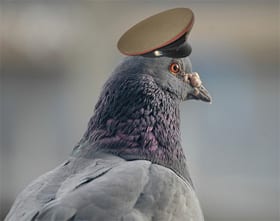
by Pigeon Patrol | May 25, 2021 | Bird Law, Columbidae, pet bird, Pigeon Predators, Pigeons in the News, Sparrows
Found in a field in mid-September by a couple out hiking in Ingersheim, northeastern France, the message was sent from one German military officer to another in 1910, when the area was still part of Germany, according to Dominique Jardy, curator of the nearby Linge Memorial museum.
Jardy told CNN the message was folded up inside a small aluminum capsule and the script is difficult to decipher.
A German friend, whom Jardy asked to translate the message, said the officer, who was based in the town of Colmar, is recounting German military exercises in the area.
“Platoon Potthof receives fire as they reach the western border of the parade ground, platoon Potthof takes up fire and retreats after a while,” the message reads, according to the AFP news agency. “In Fechtwald half a platoon was disabled. Platoon Potthof retreats with heavy losses.”
These losses are an estimate based on the war games rather than actual deaths, said Jardy, explaining that this is common practice during military exercises.
Difficulty in reading the script means there is some debate about whether the message was sent in 1910 or 1916. However, Jardy is convinced it is the former because he is not aware of any military maneuvers around Colmar in 1916, and the note uses terms specific to military exercises rather than warfare.
Artifacts like the message are almost never found today, Jardy said.
“It’s really very, very, very rare,” he said. “It’s really exceptional.”
The message will now go on display at the Linge Memorial museum, which tells the story of a battle between French and German forces in 1915.
France ceded Ingersheim and the surrounding area to Germany in 1871 after the Franco-German war, but the territory changed hands again in 1918 with the Allied victory in World War I.
Pigeon Patrol Products & Services is the leading manufacturer and distributor of bird deterrent (control) products in Canada. Pigeon Patrol products have solved pest bird problems in industrial, commercial, and residential settings since 2000, by using safe and humane bird deterrents with only bird and animal friendly solutions. At Pigeon Patrol, we manufacture and offer a variety of bird deterrents, ranging from Ultra-flex Bird Spikes with UV protection, Bird Netting, 4-S Bird Gel and the best Ultrasonic and audible sound devices on the market today.
Voted Best Canadian wholesaler for Bird Deterrent products ten years in a row.
Contact us at 1- 877– 4– NO-BIRD, (604) 585-9279 or visit our website at www.pigeonpatrol.ca
Pigeon/Pigeon Patrol / Pigeons Roosting / Vancouver Pigeon Control /Bird Spikes / Bird Control / Bird Deterrent / Pigeon Deterrent? Surrey Pigeon Control / Pest /Seagull deterrent / Vancouver Pigeon Blog / Birds Inside Home / Pigeons in the cities / Ice Pigeons/ What to do about pigeons/ sparrows , Damage by Sparrows, How To Keep Raccoons Away, Why Are Raccoons Considered Pests/ De-fence / Pigeon Nesting/ Bird Droppings / Pigeon Dropping/ woodpecker control/ Professional Bird Control Company/ Keep The Birds Away/ Birds/rats/ seagull/pigeon/woodpecker/ dove/sparrow/pidgeon control/pidgeon problem/ pidgeon control/flying rats/ pigeon Problems/ bird netting/bird gel/bird spray/bird nails/ bird guard
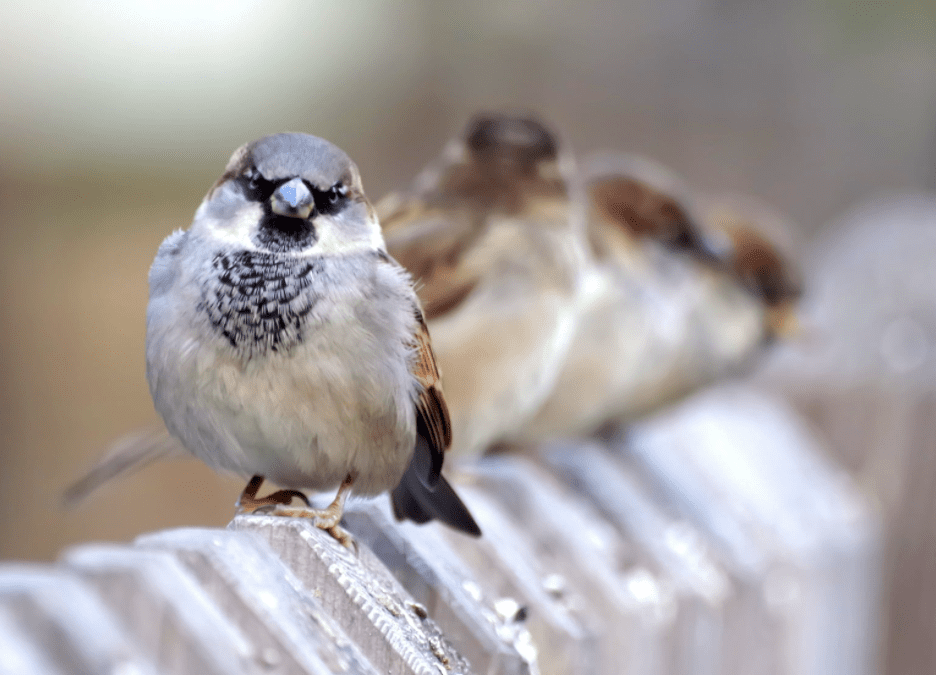
by Pigeon Patrol | Dec 7, 2020 | Bird Deterrent Products, Bird Netting, Bird Spikes, Sparrows
Curious to know why sparrows are considered to be a pest and are unwelcome? Keep on reading!
Why The House Sparrows Are Unwelcome
The common house sparrow can be more than a nuisance: Its nesting habits can bring both disease and destruction
House sparrows (Passer domesticus (L.)), sometimes referred to as English sparrows, town sparrows or domestic sparrows, are probably the most citified and ubiquitous birds around human habitation and workplaces in the United States.
This bird is native to Eurasia and northern Africa, occurring from the United Kingdom east to Siberia (with the exception of Italy). The house sparrow has been introduced into many countries and is common in populated areas throughout the world. It even colonized the Falkland Islands by traveling there aboard a fleet of whalers from Uruguay.
Eight pairs of this non-native species were purposely imported from England to Brooklyn, N.Y., in 1850 (thus, its English sparrow moniker). The initial objective was to use this bird in a misguided attempt to control larvae of the linden moth. However, it was later discovered that house sparrows don’t feed on linden moth larvae.
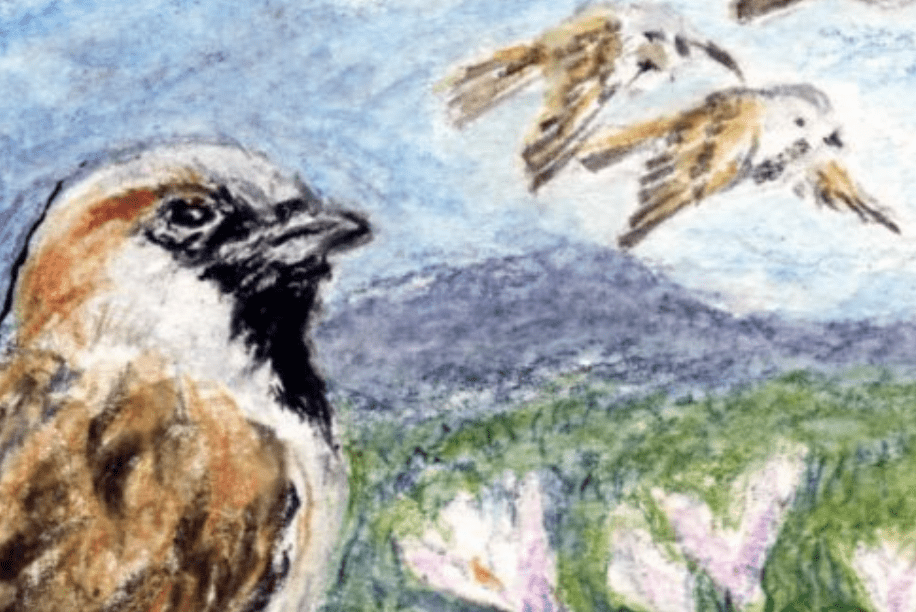
Unwelcome Houseguest
House sparrows have since become a common pest bird that lives in close association with humans, greatly depending upon them for food and nesting sites. The birds are associated with the transmission of more than 25 diseases of humans and domestic animals, including St. Louis encephalitis.
About 75 species of ectoparasites have been reported from the house sparrow in Europe and North America. A number of these live in sparrow nests, from where they often enter structures and bite people and infest domestic animals (mites) or become stored product pests (dermestid beetles, clothes moths).
In addition, house sparrow feces deface and foul structures, park benches, outdoor lunch tables, statues and stair railings, and contaminate walkways around buildings. Their uric acid droppings can even damage automobile paint.
House sparrow nests often clog roof drains, plug gutters and downspouts, and cause roof leaks. Their bulky nests made of grass, straw, feathers, hair, weeds and other dried plant materials, strings and other miscellaneous flammable trash are serious fire hazards—especially when nests are located in electrical equipment, light fixtures, around power lines and electrical substations.
Bullying Behaviour
House sparrows are opportunistic, quarrelsome, aggressive, persistent, relentless and pugnacious competitors, and they’ll frequently out-compete, drive out and displace desirable native songbirds and other endemic species such as bluebirds, woodpeckers, robins, Carolina wrens and martins.
Bird houses that are placed out to accommodate songbirds are often usurped by house sparrows. In addition, these birds often consume and contaminate poultry and livestock feed at dairies and animal feed lots.
House sparrows are also opportunistic nesters: They’ll construct nests just about anywhere. They seldom build their nests in woods, thickets or fields like other sparrows do. In cities, the overwhelming majority of house sparrow nests are built in or on buildings. They prefer openings, cavities, holes, gaps and various construction defects that allow them access to an area.
Roof Risks
House sparrows are small birds, so to exclude them from constructing nests in structures, you must block entry holes 2 centimeters or larger. It’s a formidable task on two-story or taller structures, especially those with tile roofs.
On buildings with clay and concrete roof tiles, house sparrows commonly locate nests in areas under tiles at roof edges above fascia boards. When house sparrows shove nest materials under perimeter overhanging barrel tiles, they can dislodge these heavy, precariously hanging tiles and cause them to come crashing down.
In one case, a house sparrow nest (and the bird’s frequent comings and goings) dislodged a corner barrel tile that fell 30 feet to the concrete walkway below. It crashed with such force that it shattered.
The weight of the average concrete barrel tile is 12 pounds.: If this missile, falling from about 30 feet above, were to hit someone, it would certainly cause serious injury and possibly death.
In another case on the same structure, a second-story corner barrel tile was dislodged by a sparrow nest and its occupant’s accompanying activities. The tile fell onto a first-story roof, where it broke three concrete roof tiles before it cascaded down to a concrete walkway below and shattered. source
About Pigeon Patrol:
Pigeon Patrol Products & Services is the leading manufacturer and distributor of bird deterrent (control) products in Canada. Pigeon Patrol products have solved pest bird problems in industrial, commercial, and residential settings since 2000, by using safe and humane bird deterrents with only bird and animal friendly solutions. At Pigeon Patrol, we manufacture and offer a variety of bird deterrents, ranging from Ultra-flex Bird Spikes with UV protection, Bird Netting, 4-S Gel and the best Ultrasonic and audible sound devices on the market today.
Contact us at 1- 877– 4– NO-BIRD, (604) 585-9279 or visit our website at www.pigeonpatrol.ca
Pigeon / Pigeon Patrol / Pigeons Roosting / Vancouver Pigeon Patrol / Bird Control / Surrey Pigeon Control / Pest / Vancouver Pigeon Blog / Birds Inside Home / Pigeons in the cities / Ice Pigeons/ What to do about pigeons/ most common types of sparrows , Damages Caused by Sparrows







